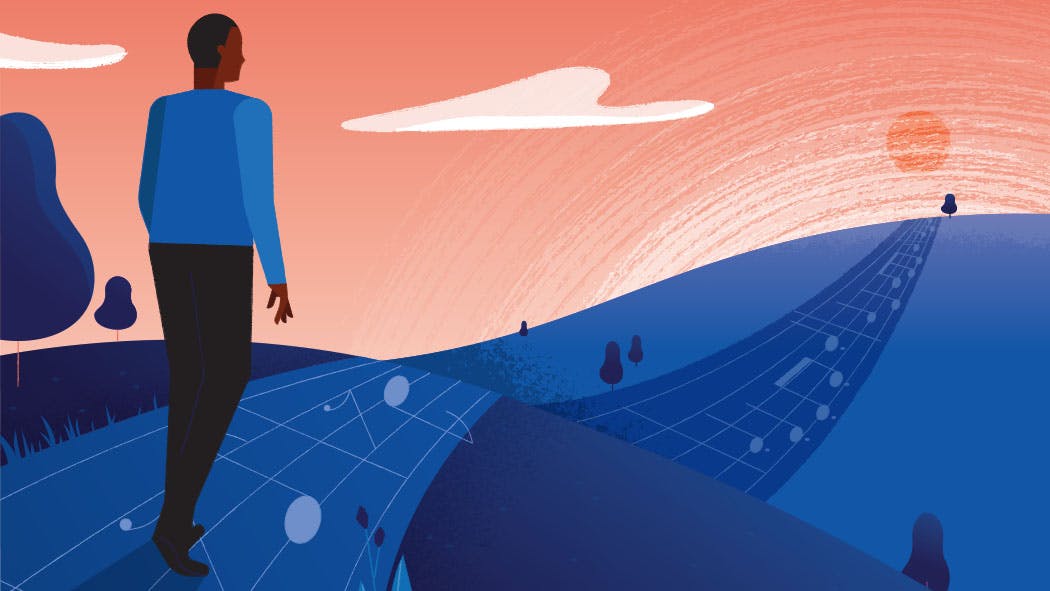Last autumn, the work of reconciliation took Professor of Music Stephen Newby on a wide-ranging quest from central Georgia to Benaroya Hall in downtown Seattle to the Seattle Pacific campus.
The mission started in September, when Newby got a call from the Seattle Symphony asking if he would narrate a musical event called The Routes of Slavery. The event, which was performed at Benaroya Hall in early November, combined music written along traditional African slave routes with a narrator’s rendition of texts on slavery.
In the early autumn, Newby also received a grant from Seattle Pacific University to plan an event called Roads to Reconciliation. He was inspired by Associate Professor of Reconciliation Studies Brenda Salter McNeil’s book, Roadmap to Reconciliation (InterVarsity Press, 2016), to use music to facilitate a discussion about slavery.
“In order to be reconciled, there has to be a dialogue where everyone at the table is considered equal,” Newby said. “People have to have a desire to create space to listen to each other’s stories so that empathy can give rise to reconciliation.”
“People have to have a desire to create space to listen to each other’s stories so that empathy can give rise to reconciliation.”
Both events aimed to tell stories around the history of slavery, approaching the project from different angles. The Routes of Slavery, a touring performance, educated audiences about historical events while celebrating musical innovation and excellence cultivated along the routes of slave traders. Roads to Reconciliation created a space for community members to share personal experiences with reconciliation through artistic expression.
“History doesn’t include the voices of those who were enslaved. It was always the colonial perspective on these chronicles of slavery,” said Monica Rojas-Stewart, assistant director of African Studies and Latin American and Caribbean Studies at the University of Washington.
Rojas-Stewart co-hosted Roads to Reconciliation with Newby and Gus Denhard, executive director of Early Music Seattle.
The Routes of Slavery presented music written along slave routes dating back to 1444, reflecting the routes taken by African slaves to be exploited in the New World. Directed by Jordi Savall, a Catalan musician whose touring performances regularly showcase early Western music, it featured music from West Africa, Central America, Spain, and Catalonia, performed by residents of the regions and paired with historical texts on slavery.
Newby narrated the performance, explaining the historical context of European slavery from the 15th century through the Civil Rights Movement in the 1960s.
“It was very healing,” he said.
A week later, Newby, Rojas-Stewart, and Denhard hosted Roads to Reconciliation. They planned the event to facilitate a more interactive discussion about racism, slavery, and reconciliation, creating a space for community dialogue following the Benaroya performance. Performers from around Seattle presented music they composed, danced, and recited spoken word poetry, then became part of the audience when the focus shifted to a discussion.
“History doesn’t include the voices of those who were enslaved. It was always the colonial perspective on these chronicles of slavery.”
— Monica Rojas-Stewart
“What we wanted to do in Roads to Reconciliation was to center the voices of African descendants, to show how they dealt and continue to deal with these stories, and how they reconciled this with history in the respective regions,” Rojas-Stewart said.
In planning Roads to Reconciliation, Newby traced his own family history back to a family of farmers in Jones County, Georgia, that had owned slaves in the 17th century.
“I knew I had to dig into my own story, my history, to bring something authentic to the table,” he said.
Through research in the county’s archives, Newby found the graves of the Newby and Mitchell families, white landowners in the area. The families’ slaves — Newby’s ancestors — had been given their owners’ last names.
At the cemetery, the white Newby family tombstones towered, prominent and elaborate, while the graves of the family’s slaves surrounded the area in unmarked and untended spaces.
Newby shared the story of finding his family’s graves at Roads to Reconciliation, pairing it with a gospel music performance to highlight the role music can play in reconciliation. The goal was for performers and audience members to “listen through the ears of someone else,” he said.
“I didn’t have an option. I had to do this,” he said. “When I stood in front of that slave owner’s tombstone, the sun was shining, and the spirit of God spoke to my spirit and said, ‘Be reconciled.’”
This article originally appeared in the spring 2019 issue of Response with the headline, “Finding history’s hidden voices.”




